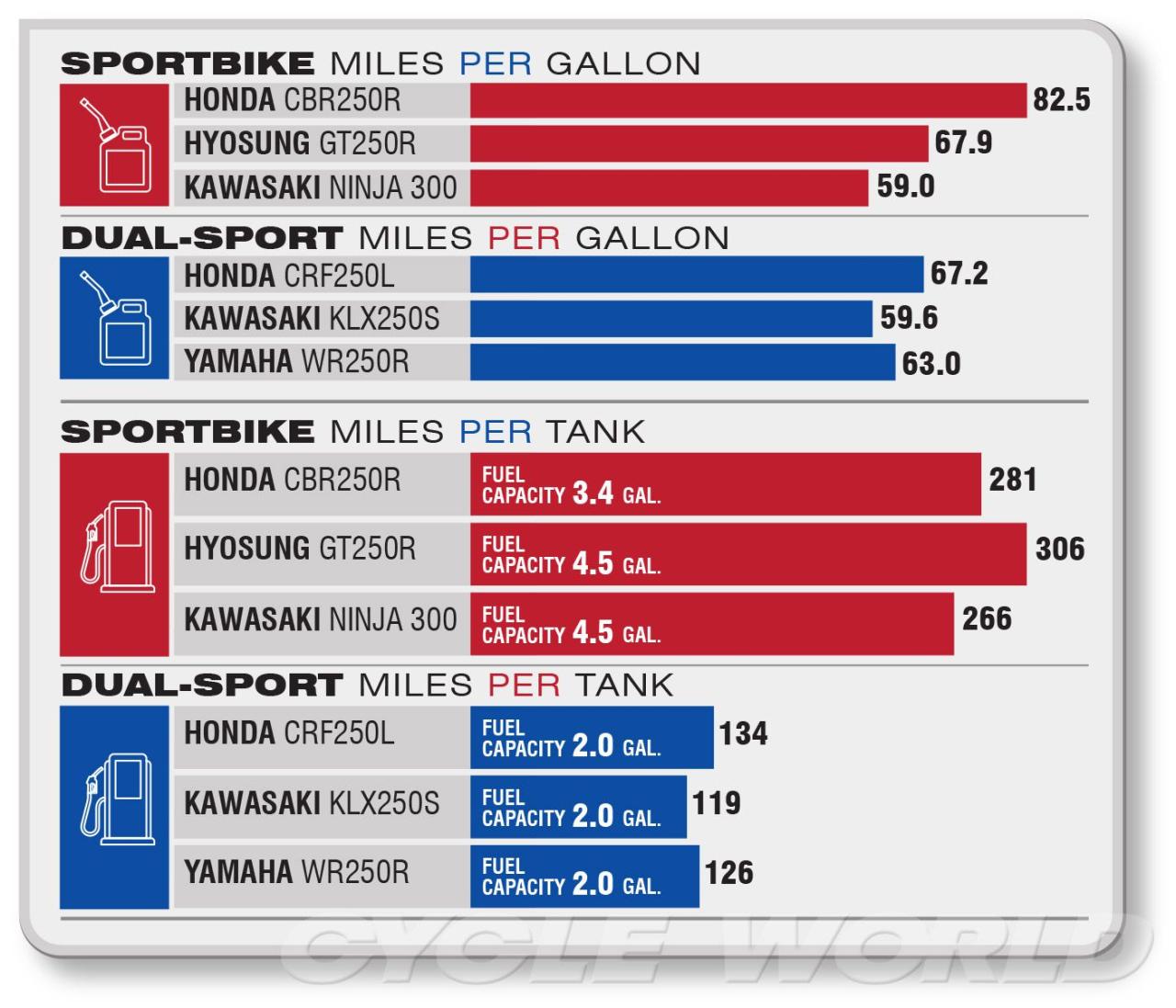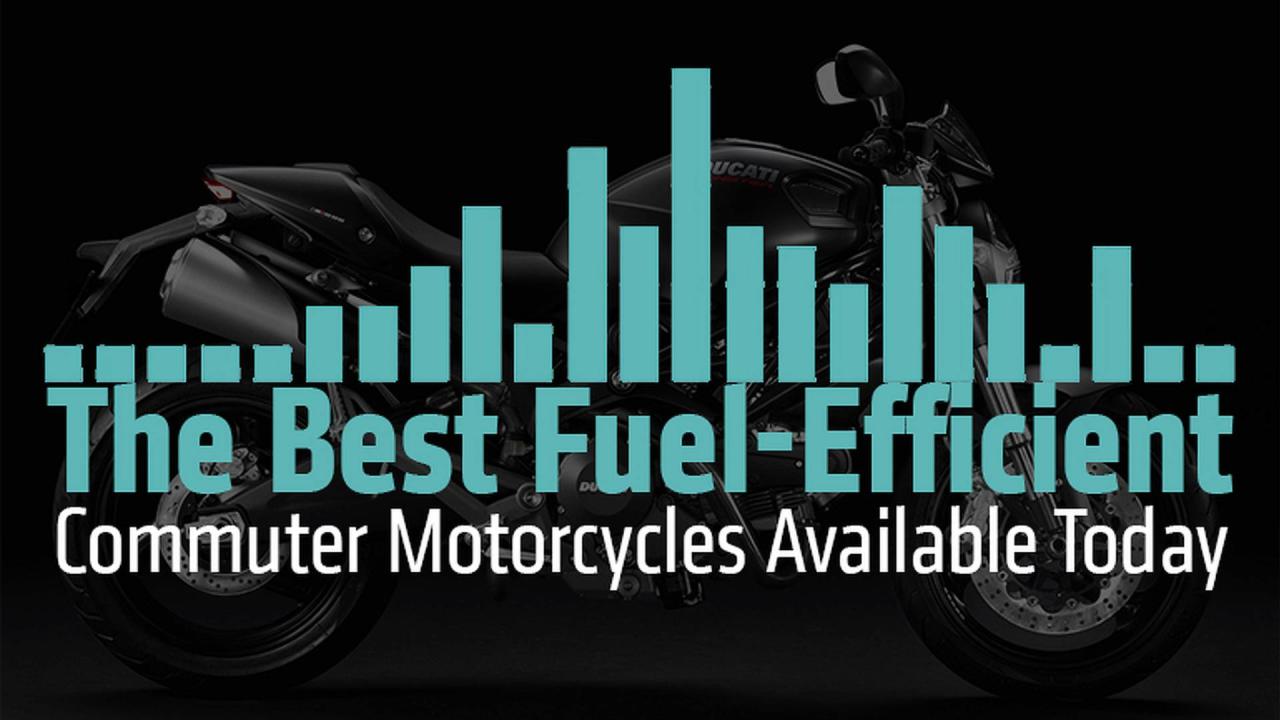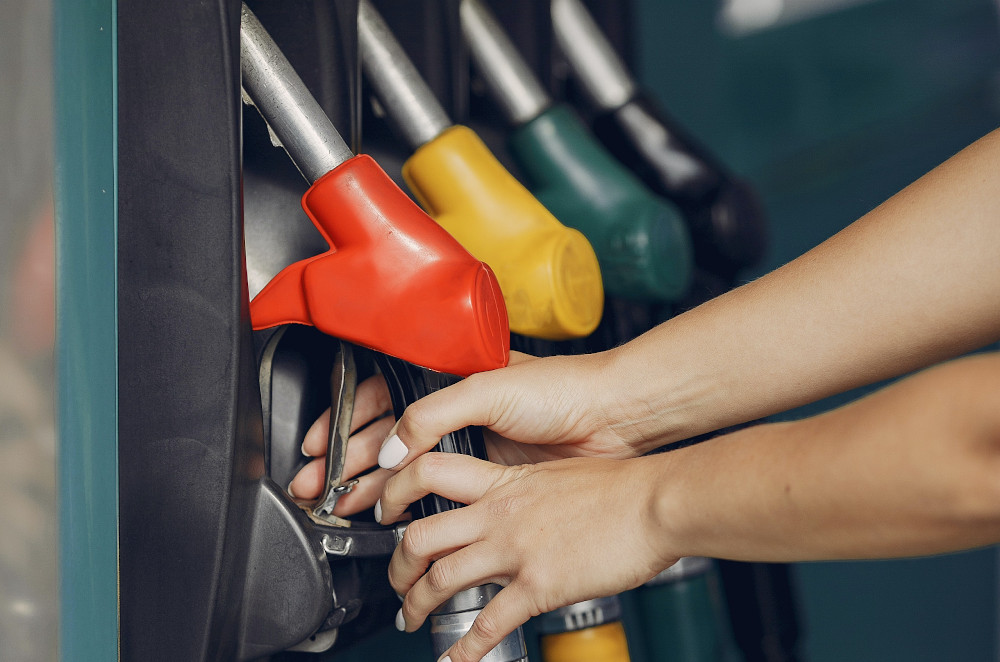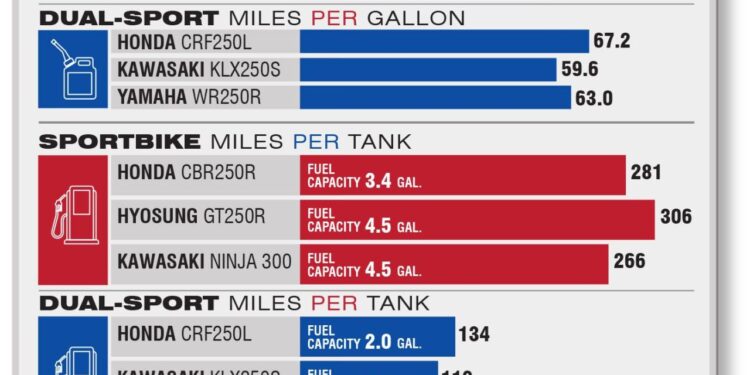Exploring the world of motorcycle fuel efficiency comparison reviews, this introduction sets the stage for a detailed examination of various metrics, testing methods, popular models, and real-world experiences. Dive in to uncover the secrets behind motorcycle fuel efficiency with this comprehensive guide.
From understanding the metrics used to measure fuel efficiency to exploring the impact of different riding styles, this overview will provide valuable insights for motorcycle enthusiasts and riders alike.
Motorcycle Fuel Efficiency Metrics
When it comes to measuring motorcycle fuel efficiency, there are different metrics used to evaluate how efficiently a motorcycle consumes fuel. Understanding these metrics is crucial for consumers looking to make informed decisions about their next motorcycle purchase.
City vs. Highway Fuel Efficiency Ratings
City and highway fuel efficiency ratings are two key metrics that consumers often consider when evaluating a motorcycle's fuel efficiency. Each rating provides valuable insights into how a motorcycle performs in different driving conditions.
- City Fuel Efficiency: This rating measures how many miles per gallon (MPG) a motorcycle can achieve in city driving conditions, which typically involve frequent stops and starts. City fuel efficiency is important for commuters or riders who primarily use their motorcycles for urban travel.
- Highway Fuel Efficiency: On the other hand, highway fuel efficiency focuses on how many miles per gallon a motorcycle can achieve on the open road at higher speeds. This metric is crucial for riders who frequently take long trips or enjoy highway cruising.
It's essential to consider both city and highway fuel efficiency ratings to get a comprehensive understanding of how a motorcycle performs in various scenarios.
Factors Impacting Fuel Efficiency
Several factors can impact the fuel efficiency of a motorcycle, influencing how many miles per gallon it can achieve under different conditions.
- Engine Size and Type: The size and type of the engine can significantly affect fuel efficiency. Smaller engines tend to be more fuel-efficient, while high-performance engines may consume more fuel.
- Riding Style: Aggressive acceleration, speeding, and frequent braking can all contribute to lower fuel efficiency. Maintaining a smooth and steady riding style can help improve fuel economy.
- Aerodynamics: The design of the motorcycle, including fairings, windshield, and body shape, can impact aerodynamics and fuel efficiency. Sleeker designs are often more fuel-efficient at higher speeds.
- Tire Pressure: Proper tire pressure is essential for optimal fuel efficiency. Underinflated tires can increase rolling resistance, leading to higher fuel consumption.
- Maintenance: Regular maintenance, such as oil changes, air filter replacements, and tune-ups, is crucial for ensuring peak fuel efficiency. Neglected maintenance can lead to decreased fuel economy.
Methods for Conducting Fuel Efficiency Comparisons

When comparing motorcycle fuel efficiency, it is crucial to follow standardized testing procedures to ensure accurate and reliable results. By understanding the key variables that affect fuel consumption and considering different riding styles, we can gain valuable insights into how motorcycles perform in terms of fuel efficiency.
Standardized Testing Procedures
- Use the same route and conditions for each test to ensure consistency.
- Fill the fuel tank to the same level before each test to eliminate variations in fuel quantity.
- Record the starting and ending odometer readings to calculate the distance traveled accurately.
- Maintain a constant speed throughout the test to minimize external factors affecting fuel consumption.
Key Variables to Consider
- Engine size and type can significantly impact fuel efficiency, with smaller engines typically consuming less fuel.
- Riding conditions, such as city traffic versus highway cruising, can affect fuel consumption due to frequent stops and starts in urban areas.
- Tire pressure, weight of the rider, and cargo load can also influence fuel efficiency by altering the motorcycle's overall performance.
Impact of Riding Styles
- Aggressive riding, such as sudden acceleration and braking, can lead to higher fuel consumption due to increased energy demand.
- Maintaining a steady speed, avoiding excessive idling, and shifting gears smoothly can help improve fuel efficiency during rides.
- Choosing the right gear for the speed and road conditions can optimize fuel consumption by keeping the engine operating at its most efficient range.
Reviewing Motorcycle Fuel Efficiency Models
When it comes to reviewing motorcycle fuel efficiency models, it is important to analyze popular motorcycle models known for their fuel efficiency and contrast the fuel efficiency of different types of motorcycles like cruisers, sport bikes, and touring bikes. Additionally, providing examples of innovative technologies that improve motorcycle fuel efficiency can offer insights into the advancements in this area.
Popular Motorcycle Models for Fuel Efficiency
- One popular motorcycle model known for its fuel efficiency is the Honda CB500X, which offers a balance of power and efficiency for everyday riding.
- The Yamaha MT-07 is another model that stands out for its fuel efficiency while delivering a thrilling performance.
- For touring bikes, the BMW R1250GS is recognized for its fuel-efficient engine that allows riders to cover long distances with fewer fuel stops.
Contrasting Fuel Efficiency Across Motorcycle Types
- Cruisers, with their larger engines and relaxed riding positions, typically have lower fuel efficiency compared to other types of motorcycles.
- Sport bikes, designed for speed and performance, may sacrifice fuel efficiency for higher power output.
- Touring bikes, optimized for long-distance rides, often incorporate fuel-efficient technologies to maximize mileage on the road.
Innovative Fuel Efficiency Technologies
- One innovative technology that improves motorcycle fuel efficiency is the use of electronic fuel injection systems, which provide more precise fuel delivery for better mileage.
- Another example is the implementation of variable valve timing (VVT) systems, which optimize engine performance across different riding conditions while enhancing fuel efficiency.
- Lightweight materials and aerodynamic designs also play a significant role in improving fuel efficiency by reducing drag and enhancing overall performance.
User Experiences and Real-world Comparisons

When it comes to motorcycle fuel efficiency, real-world experiences from riders can provide valuable insights into how different factors can affect the overall mileage of a motorcycle. From the type of bike to the riding habits of the owner, there are several aspects that come into play when determining fuel efficiency.
Role of Maintenance in Maintaining Optimal Fuel Efficiency
Regular maintenance is crucial in ensuring that a motorcycle maintains optimal fuel efficiency. Simple tasks such as keeping the air filter clean, monitoring tire pressure, and regular oil changes can all contribute to better mileage. Additionally, ensuring that the engine is properly tuned and that all components are in good working condition can also help improve fuel efficiency.
Tips on How Riders Can Improve Their Motorcycle’s Fuel Efficiency
Maintain a steady speed
Avoid rapid acceleration and deceleration, as this can waste fuel.
Check tire pressure regularly
Under-inflated tires can increase rolling resistance and decrease fuel efficiency.
Lighten the load
Carrying unnecessary weight on your bike can reduce fuel efficiency, so only carry what you need.
Plan your routes
Avoid heavy traffic and opt for routes with smoother roads to improve fuel efficiency.
Use higher gears
Riding in a higher gear at lower speeds can help conserve fuel.
Final Review

In conclusion, this discussion on motorcycle fuel efficiency comparison reviews sheds light on the intricacies of testing, model analysis, and user experiences. Whether you're a seasoned rider or a newcomer to the world of motorcycles, optimizing fuel efficiency is key to a smoother and more cost-effective journey on the road.
Query Resolution
What are the key metrics used to measure motorcycle fuel efficiency?
The key metrics include miles per gallon (MPG), liters per 100 kilometers (L/100km), and fuel consumption rate.
How does maintenance impact a motorcycle's fuel efficiency?
Maintenance plays a crucial role in maintaining optimal fuel efficiency by ensuring components like spark plugs and air filters are in top condition.
Can different riding styles affect a motorcycle's fuel consumption?
Yes, aggressive riding styles with frequent acceleration and braking can lead to higher fuel consumption compared to smoother, more consistent riding.













